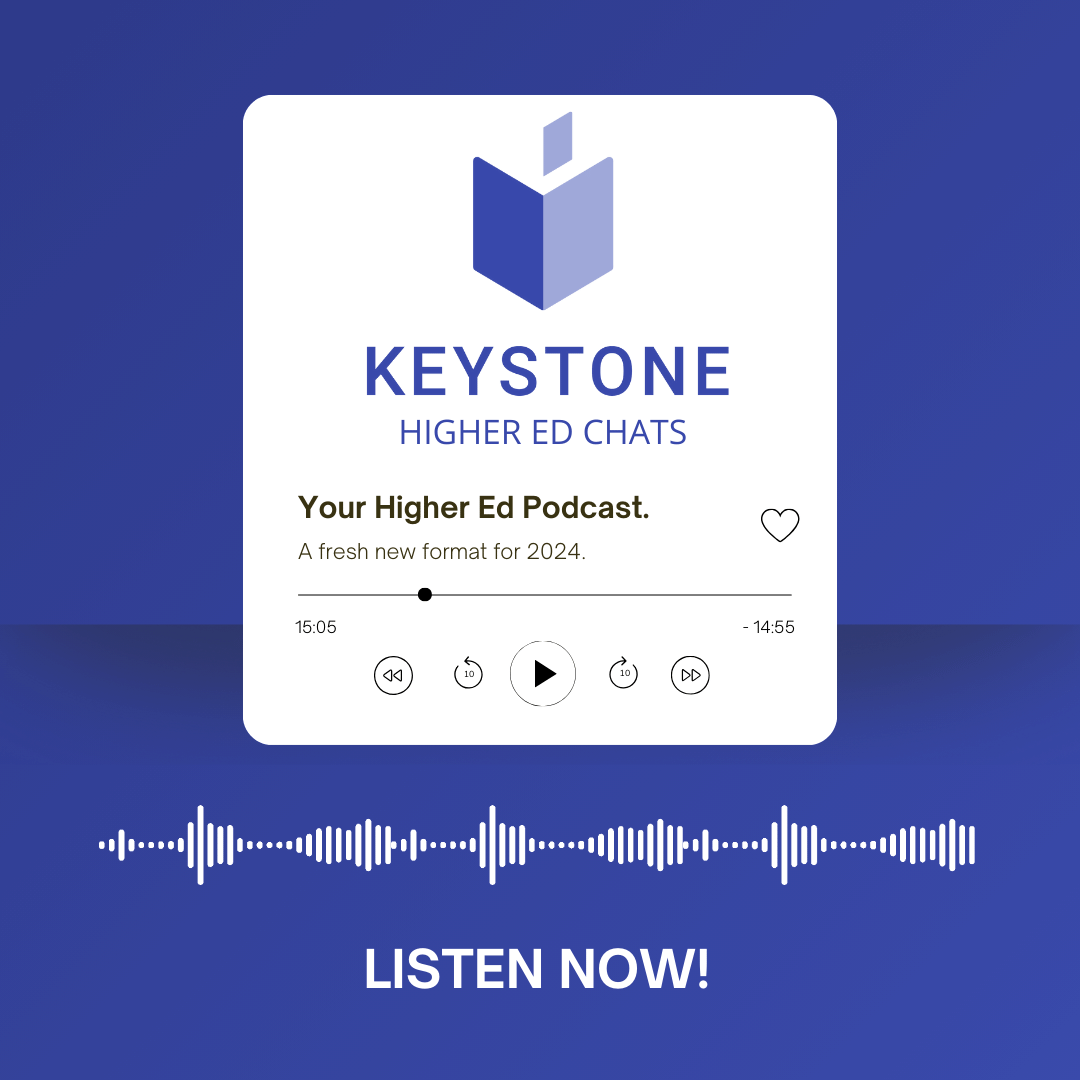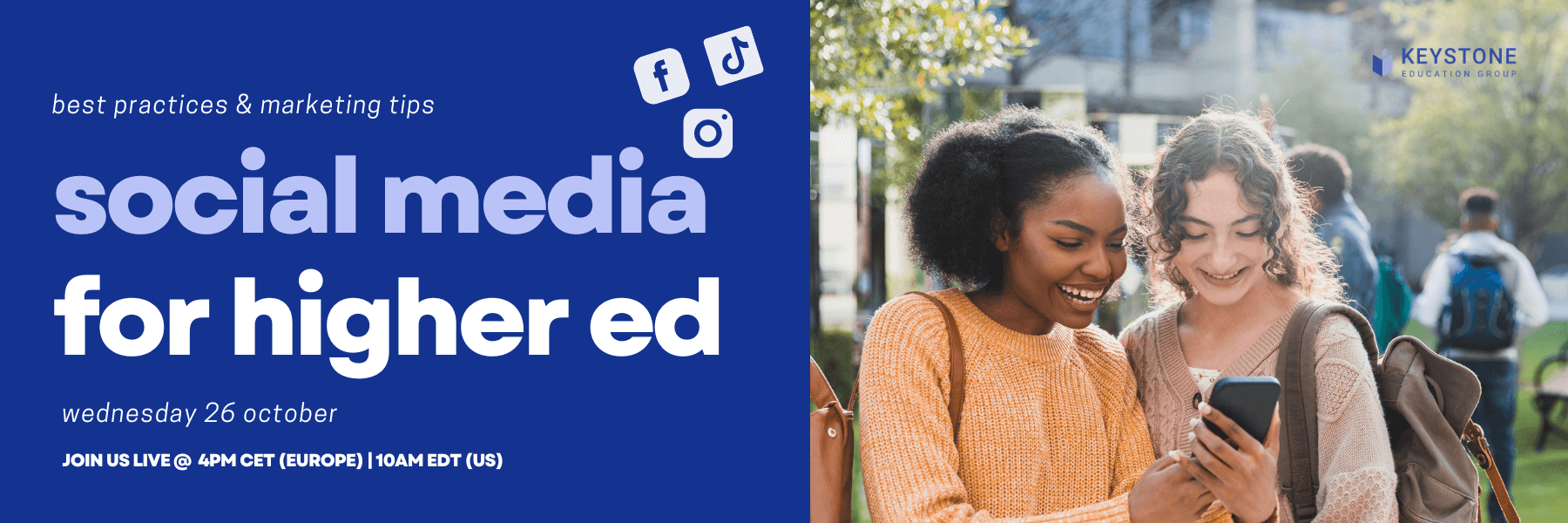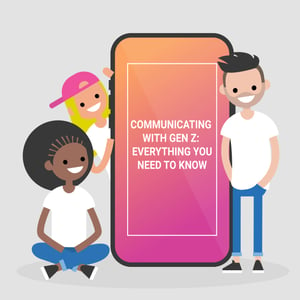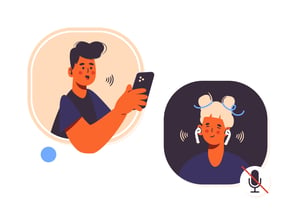- SERVICES
- HIGHER EDUCATION MARKETING
- ENGAGEMENT & ENROLLMENT MANAGEMENT
- STUDENT RECRUITMENT AGENCIES
- PROFESSIONAL EDUCATION & TRAINING
- WHO WE ARE
WHO WE ARE
Learn more about Keystone Education Group, including our leadership structure, why choose Keystone as your educational partner, and company press releases.
QUICK LINKS
- RESOURCES
RESOURCES
Find a range of helpful resources to help with your educational marketing. From on-demand webinars, reports & data, to customer testimonials and our downloadable media kit.
QUICK LINKS
- NEWS
- REQUEST A CALL

- Keystone Higher Education News
- Top 7 Social Media Innovations of 2020
.png?width=1800&name=Copy%20of%20SRBP%20LinkedIn%20Email%20(9).png)
While 2020 will forever be synonymous with pandemic, it was also a year that brought about many interesting and unique trends. With many people working from home, isolated from friends and family, and more connected to their devices than ever before for news and entertainment, many new opportunities emerged in the social media space.
Here’s a closer look at seven of the newest and most exciting things that happened on the social media scene last year, and what they mean for Higher Ed recruitment.
1. More stories were told
While Snapchat and Instagram stories have been around for a while, several other platforms got in on the Stories action in 2020. LinkedIn Stories, Pinterest Story Pins, and Twitter Fleets all debuted last year.
Stories typically feature images or videos which expire after 24 hours. These easily digestible “bites” of content are easily consumable and shareable. They also lay claim to a prominent top-of-the-newsfeed location on apps like Instagram and Facebook. Additionally, the transient and visual nature of Stories makes them an exciting content delivery mode; especially when you factor in that they take little time to plan and execute.
Then there’s the fact that Stories are popular with sought-after millennials and Gen Z. “There’s an entire generation growing up with stories as a way of speaking,” LinkedIn Senior Director of Product Management Pete Davies told Later.Given that this is a plum market for higher education recruitment, integrating Stories into your digital marketing plans can help you reach your target audience in an exciting and engaging new way."
2. TikTok took off
A year ago, the majority of people had never heard of TikTok. Today, it has more than a billion users in more than 150 countries. Millions of people all over the world have downloaded this app, which has proven to be popular across all generations and with all demographics of people. What initially seemed like a trend is now a way of life.
Like Stories, TikTok appeals to a target demographic for higher education recruitment (more than 60 percent of users are under 30). Many universities have created TikTok accounts to share content in two ways: by creating their own as well as by curating content from users who are engaged with their brand
Specific examples of ways universities are using TikTok are: for alumni features and stories, highlighting specific courses and majors, "a-day-in-the-life" student stories, campus, building and classroom tours, and curated graduation and acceptance videos.
3. WhatsApp Expanded Its Offerings
As the world’s leading secure messaging platform, WhatsApp was doing well prior to the pandemic. During the pandemic, the company adapted to expand its functionality, such as the addition of 8-party video calls, and multi-device access.
WhatsApp’s profile in the higher education sphere increased exponentially as colleges were forced to quickly transition to remote learning, while also remaining in touch with their constituents. “In the context of COVID-19 social distancing’s complete interruption of schedules and routine, in-person events are not an option, and students will likely not spend their days studiously in front of their computer screens, checking their emails. Other kinds of screen time might skyrocket (movies, social media, video games, FaceTime), but their school emails will almost certainly remain unopened,” explains Mogli.
Reaching students on their phones via text message proved to be an especially effective way to cut through the noise.
WATCH ON DEMAND WEBINAR:
4. Memes Made Us Laugh
While memes weren’t new in 2020, they did gain major momentum in 2020. We’ve all seen the army of COVID memes, however they’re far from alone.
In fact, Inside Higher Ed did a feature on the rise of university-specific memes. Humor is a great way to connect with consumers in general, but an especially relevant way to reach younger audiences. Memes also have tremendous viral potential thereby amplifying your efforts at no additional expense to you. But remember, all memes aren't created equal. In the case of university marketing, memes must be brand-on as well as a controlled part of your storytelling. Above else, they must also be funny, because there's nothing less appealing than a meme that misses the mark or falls flat.
Which begs the question: why were memes omnipresent in 2020? “While spending more time online can be both exhausting and enthralling during this time, there’s no doubt that it’s the main way we’re connecting with each other these days — and as a result, it means that Internet culture is moving faster than ever, producing a wealth of memes, both humorous and pithy, that reflect the moment we’re living in,” proposes Time magazine.
5. Influencers Got Authentic
Influencer marketing isn’t just right now. It’s also lauded as the wave of the future; especially as it matures and evolves. However, all influencers aren’t created equal. In 2020, “authentic” influencers proved themselves to be more successful than “power influencers.” This was because they share content they actually care about.
“Social media users know what a forced relationship with a brand looks like, and they’re tired of seeing these interactions...I encourage brands and companies to look for influencers who will authentically use their product or service and share it with their audiences,” DKY social media manager Kendall Bird told Search Engine Journal (SEJ).
Influencer marketing is very powerful in higher education marketing. Given statistics indicating that most people trust influencers more than brands, leveraging the power of your community members, students, faculty, and more, to spread your school's method can be a very powerful tool for improving brand advocacy, expanding brand awareness, reaching new target audiences, and increasing your share of voice.
Last year may not have been the year any of us expected or wanted, but that doesn’t mean no good could come from it. In fact, 2020 proved the adage, “necessity is the mother of invention,” absolutely holds true.
While the majority of these social media updates may have been devised as a response to COVID, their usefulness will endure; with a catch. “When it comes to creating content, brands need to counteract the social media noise, think ‘less is more,’ and create messaging that actually resonates with their key audience(s),” senior social media manager Michael Williams told SEJ. In the case of universities, this means keeping the student experience at the center of all of your social strategies.
More about:
Related Tags
Just For You
Top Picks
Higher Ed Chats Podcast
Listen to the latest episodes of our Higher Ed Chats Podcast - new format for 2024. Hear from Higher Ed thought-leaders from around the world!

Webinar: Dos & Don'ts of Higher Ed Social Media
.png?width=500&name=Social%20Media%20Webinar%20March%2024%20Banners%20(3).png)
Join our live webinar on 27th March to hear from a panel of Higher Ed Social Media experts.
Subscribe
to get the latest news and updates






